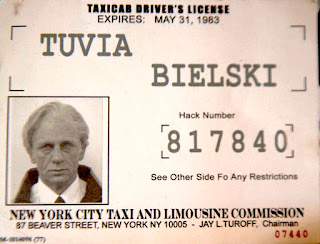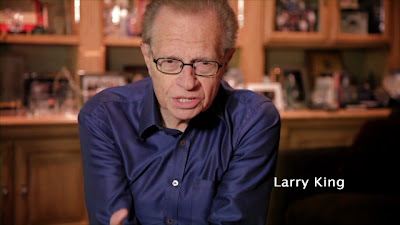The first place winner of the Upper Division category (10th-12th grade) of our 2011 Youth Writing Contest was EJ Weiss, a sophomore from Kehillah Jewish High School in California. Congratulations, EJ!
Winning essayist EJ Weiss (on right)
with her History Instructor Jaclyn Guzman
EJ's essay starts by talking about what she believes is threatening humanity today - silence. "It is not guns, nor gas, nor bombs that threaten humanity. It is silence," she says.
Cries of the innocent, the deafening shot of a rifle, the faint sound of gas spreading, followed by utter silence. It is not guns, nor gas, nor bombs that threaten humanity. It is the silence. A silence that only a strong person can break. A silence that was broken by young people standing guard in the freezing cold, mining the train tracks, slowly nursing people back to health, and saving lives of brave men and women who entered a seemingly impossible battle. While evil stared in the hollow faces of men, women, and children, piercing the hearts of mothers, fathers and children, the partisans took action.
Using her limited knowledge of her great uncle Shmuel, a Jewish partisan, EJ shows her understanding of the partisans.
"My great uncle Shmuel was one of these brave young partisans. I know he had a great spirit of resistance and fought for the freedom of my family and the Jewish people. Unfortunately, that is all I know about him. His story was never told. He was one of the millions that perished in the war, but one of only thousands that died while fighting back."
Her essay continues, referencing the story of Jewish partisan Sonia Orbuch.

click on name for more information on Sonia
"I imagine that his story is like that of Sonia Orbuch. Sonia Orbuch could have worried for her own safety and never faced the wicked force threatening her people, but, instead, she devoted herself to combating the atrocity. Even in a predominantly non-Jewish, Russian partisan unit, without training in weapons, she retaliated. She is an inspiration. Partisans like Sonia resisted by sabotaging the Nazis by stealing weapons and food, and prevailed by living and cultivating a proud Jewish existence. She and her fellow Partisans were not among the silent. They would not allow evil to prosper. They fought back. They were fundamental in the triumph of good, and are a key component to my proud, strong, Jewish identity."
EJ's essay concludes with a discussion of what is happening in the world today.
"The horrors of war and genocide still exist in the world, but the greater evils that Shmuel and Sonia faced are not at my doorstep. It is easy to close our eyes and live in the cocoon of our comfortable existence, but we must open our eyes to the corruption and injustice surrounding us. If we listen, we can hear the cries of our poor, hungry and homeless neighbors. If we are aware, we can feel the despondency of the drug addict and the pain of victims of prejudice, racism and anti-Semitism. And if we only look, we can see the irreversible damage to our planet that is caused by pollution. It is our duty to even the scales of justice in the world. We must take action. Through educational initiatives the cycle of poverty can end, by going green we can save our planet, and through donating blood and marrow to the terminally ill we can fight for life. But, the way to truly defeat evil is by teaching others not to be indifferent. We must resist, we must defy, we must fight, and we must never embrace silence."
In addition to meeting the contest's guidelines, EJ's essay exemplified the inspiration between the student and the partisan, which resonated very strongly with the readers and judges.
Reflecting on her experience with the Writing Contest EJ notes, "the Writing Contest has inspired me and given me pride in the relatives I will never meet because they fought against the cruel hand of injustice. I now not only remember the bitter end of the six million Jews, but also the fighting spirit of the forceful resistance. This contest has forever changed my perspective of the Holocaust, my people, and my family."
EJ's History Instructor Jaclyn Guzman adds, "JPEF’s Writing Contest is a perfect match for classes that are looking to transform the lessons of history into their students’ understanding of the world. The essay contest provides a true connection to real people and brings the past to the present for the students. Instead of their writing being removed from and only commenting on the history they are learning, the students are motivated to reflect on and relate with the history. The interactive nature of the essay and the JPEF website mirrors the hands-on history philosophy of my school in which the students are participants and not merely observers of history."
Elliott Felson, co-chair, JPEF Board of Directors commented, "JPEF's Writing Contest allowed me to experience the impact our work has on the kids that are exposed to it. The student's essays were thoughtful, bright, and creative: each one of them, from middle school to high school, spoke from the heart and were moved to make a difference in the world in their own way."
San Francisco philanthropist, financier, and supporter of JPEF, Warren Hellman, died Sunday, December 18, 2011 at age 77 of Leukemia. While most know him for his incredible business skills, generosity of spirit, and annual “Hardly Strictly Bluegrass” music festival in San Francisco’s Golden Gate Park, the Board and staff of JPEF will also remember Warren for his generous support of JPEF over the past five years with his wife Chris through the Hellman Family Foundation.







































 For complete quotes with context and discussion questions, download the Ethics and 'Defiance' guide at
For complete quotes with context and discussion questions, download the Ethics and 'Defiance' guide at 

